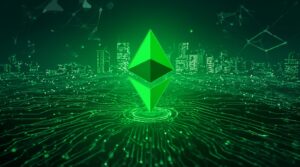The Philippines stands at a unique juncture in 2023, balancing the remnants of pandemic health crises with a pushing forward of its socio-economic agenda. This exploration offers a deep dive into recent events, political dynamics, economic trajectories, and the cultural fabric that define this vibrant Southeast Asian archipelago today.
Steering Through Current Events
In the wake of significant turmoil caused by the COVID-19 pandemic and consequential public health measures, the Philippines has embarked on a journey of recuperation and resilience. The lifting of the COVID-19 public health emergency signified not only a return to a semblance of normalcy but also charted a new course for the nation’s collective awareness and sensitivity to governance and public welfare. This transformation is further evidenced by the nation’s response and adaptation to various events and developments.
The unforeseen closure of Philippine airspace in early 2023, a logistical and operational debacle, spotlighted the infrastructure’s vulnerabilities and governance challenges. The incident not only disrupted thousands of lives but also prompted an introspective assessment of the nation’s preparedness and response mechanisms to such emergencies. This event amplified calls for enhanced efficiency and transparency within governmental ranks, echoing the public’s demand for accountability and robust infrastructure development.
In stark contrast to the challenges, the Philippines has also celebrated commendable achievements that showcase the resilience and talents of its people. The triumph of the Ateneo de Manila University debate team in an international debating championship served as a beacon of intellectual prowess and academic excellence on the global stage. This victory was a testament to the quality of Philippine education and the potential of its youth, inspiring pride and optimism within the country.
The discovery of new species in Mindanao’s lush biodiversity further demonstrated the Philippines’ rich natural heritage and underscored the critical importance of environmental conservation efforts. These scientific explorations brought to light the need for sustainable development policies that balance economic growth with ecological preservation, presenting a template for responsible stewardship of natural resources.
Amid these developments, the nation also grapples with ongoing issues such as the sugar crisis, which has underscored vulnerabilities in the agricultural sector and the need for comprehensive policy reforms. This crisis, affecting both producers and consumers, highlighted the interconnectedness of food security, economic stability, and governance.
Furthermore, the regional contention in the South China Sea remains a prevailing concern, posing challenges to national sovereignty, security, and diplomacy. The Philippines’ engagement in this issue reflects the broader dynamics of international relations and national defense priorities, demanding adept diplomatic strategies and alliances.
Significant judicial decisions have also shaped the national conversation, reflecting the judiciary’s role in addressing contemporary social issues, human rights, and governance. These decisions not only influence the legal landscape but also affect public perception of justice and the rule of law in the Philippines.
As these current events and developments unfurl, they collectively influence the Filipino populace’s perceptions of governance, stability, and progress. Each incident, achievement, and challenge contributes to the national consciousness, steering the Philippines through a path of self-awareness, critical reflection, and aspiration for a future that reconciles growth with equity, justice, and sustainability.
Political Landscape and Power Dynamics
The Philippine political landscape in 2023 remains a complex web of tradition, power dynamics, and rapid transformation propelled by both internal and external pressures. At its core, the structure of the government bifurcates power among the executive, led by the President, the legislative body consisting of the Senate and the House of Representatives, and an independent judiciary headlined by the Supreme Court. This tripartite system forms the pillars upon which the democratic framework of the nation stands, embodying a blend of American and Spanish colonial influences alongside indigenous political culture.
The political climate is significantly influenced by the actions and policies of the Presidency, with the current administration focusing on maintaining stability, economic growth, and addressing long-standing issues such as illegal drugs and corruption. The ruling elite, comprising political dynasties and influential figures in business and society, continue to wield considerable influence in shaping policy and political discourse. This influence is often seen in the legislation process and in the electoral campaigns, where political patronage and family names carry substantial weight.
Public opinion on democracy and electoral processes reveals a mix of scepticism and hope. With a history of electoral fraud and political unrest, the Filipino populace remains vigilant in its quest for transparent and fair elections. However, the presence of political dynasties and the system of patronage politics sometimes leaves the electorate cynical about real change. Despite this, there is a robust civil society in the Philippines that actively engages in the political process, advocating for reforms and the protection of democratic values.
Political parties in the Philippines are numerous, but often criticized for lacking distinct ideological platforms. Instead, political alignments are frequently based on personal loyalties and alliances rather than on policy or ideology. This characteristic has contributed to a fluid political landscape where shifts in allegiance are commonplace.
On the international stage, the Philippine government’s actions, particularly in its relations with the United States, have been closely watched. The strategic military and economic ties between the two nations have seen adjustments, with the Philippines balancing its longstanding alliance with the US against increasing economic and strategic engagement with China. This balancing act is especially evident in the context of the South China Sea disputes, where national sovereignty, resources, and geopolitical rivalries intersect.
Recent government responses to local crises, such as natural disasters and the COVID-19 pandemic, reflect a proactive stance in disaster preparedness and public health management. However, these responses also highlight the challenges of governance in the face of resource constraints and the need for efficient coordination across different levels of government.
In conclusion, the political landscape of the Philippines in 2023 is marked by a blend of continuity and change. The enduring influence of political dynasties, the strategic maneuvering in international relations, and the vibrant civil society engagement paint a picture of a nation navigating the complexities of modern governance while grappling with the legacies of its past. As it moves forward, the interplay between the executive, legislative, and judiciary branches, along with the active participation of the citizenry, will be crucial in shaping the country’s political trajectory.
Economic Growth and Challenges
The Philippine economy’s evolution from its agricultural roots to a more diverse focus, highlighting services and manufacturing, encapsulates its dynamic shift towards modernization. Amidst this backdrop, the country emerges as one of the fastest-growing economies in the region, a beacon of progressive growth rates and optimistic projections. However, beneath the surface of these accolades lie persistent regional and social inequities that challenge the uniformity of this growth across the archipelago.
Central to this economic paradigm shift is the burgeoning service sector, which includes the BPO (Business Process Outsourcing) industry, tourism, and a rapidly developing information technology sector, showcasing the Philippines’ capacity to integrate into the global economy through services. Meanwhile, manufacturing has seen revitalization, driven by electronics, automotive parts, and an emerging aerospace industry, pointing towards a diversification of production capabilities.
The role of Overseas Filipino Workers (OFWs) cannot be overstated, as their remittances constitute a substantial lifeline for the economy, supporting millions of families back home and fueling domestic consumption. This human capital abroad underscores the Philippine economy’s unique aspect: its reliance on and the significant contribution of its diaspora to national development.
Trade partnerships, especially with major economies such as the United States, China, Japan, and the ASEAN region, further reinforce the Philippines’ economic resilience and growth prospects. These relationships not only provide markets for Filipino goods and services but also attract foreign direct investment critical for infrastructure and development projects.
However, to sustain and capitalize on this growth trajectory, the Philippines faces the imperative of addressing infrastructure bottlenecks and implementing crucial reforms. Investment in infrastructure, particularly in transportation, telecommunications, and energy, is vital for enhancing competitiveness and ensuring that the fruits of growth are more evenly distributed across the country. Similarly, educational and labor reforms are necessary to equip the workforce with the skills required for a rapidly changing global economy.
As the Philippines aspires towards becoming a $2-trillion economy, tackling these challenges head-on is essential. This includes fostering an environment supportive of innovation and entrepreneurship, ensuring sustainable development practices, and prioritizing inclusive growth strategies. By doing so, the Philippines can not only maintain its economic vibrance but also pave the way for a future where prosperity is shared and sustainable.
Transitioning from an examination of the political landscape that sets the stage for economic policies and governance, this exploration of economic milestones and hurdles leads naturally into a reflection on how these developments interplay with the rich cultural mosaic of the Philippines. The narrative now turns towards understanding how economic changes inspire and are reflected in the cultural identity and practices of the Filipino people, preserving uniqueness while adapting to global influences.
Cultural Mosaic and Identity
In the vibrant archipelago of the Philippines, a cultural mosaic is vividly displayed through the intricate weave of its historical tapestry. The geographical diversity of over 7,000 islands has given rise to a plethora of ethnic groups, each with its own unique cultural expressions influenced by the land’s topography. From the rice terraces carved into the mountains of the Cordilleras, testament to the Indigenous peoples’ harmonious relationship with the landscape, to the colorful vintas of the Moro communities in the south, the Philippine culture is a testament to the adaptability and creativity of its people.
Colonial legacies intertwine with indigenous roots, a reflection of the Philippines’ complex history of Spanish and American rule, alongside influences from Chinese and Malay trade relationships. This blend is evident in the country’s predominant faith, Roman Catholicism, festooned with indigenous animistic practices, and in the Filipino language itself—a melding of native dialects with Spanish, English, and Malay words. Festivals like the Ati-Atihan and Sinulog illustrate this syncretism, combining Catholic saints’ feasts with pre-Hispanic rituals of thanksgiving and renewal.
The integration of diverse ethnic groups into a unified national identity remains a work in progress, as regional languages and traditions retain their prominence. However, the widespread use of Filipino and English as official languages has facilitated a sense of national community. In daily life, traditional practices persist, such as the bayanihan, or community spirit, wherein neighbors help each other move houses by literally carrying the bamboo house to a new location, and the boodle fight, a military-style communal meal that has transitioned into mainstream society.
In contemporary society, the evolution of these traditions is evident as they adapt to the digital age and global cultural exchanges. Diaspora communities bring their culture to the world, while simultaneously importing global influences back to the Philippines, seen in the popularity of beauty pageants, basketball, and social media trends among Filipinos. Yet, through this global exchange, the Filipinos’ strong sense of identity and pride in their heritage remains intact.
The Philippine culture, thus, stands as a testament to resilience and adaptability, maintaining its unique characteristics while embracing the changes brought by an ever-globalized world. This dynamism underpins not only the social fabric of the nation but also contributes to the economic growth and challenges discussed in the previous chapter, demonstrating the intricate link between culture and development in the Philippine context.
Conclusions
The Philippines in 2023 is a nation sailing on a tide of recovery, political recalibration, economic ambition, and cultural preservation. While navigating through the remnants of global upheavals and local challenges, Filipinos remain committed to strengthening their democracy, boosting their economy, and celebrating the diverse cultures that form their collective identity.







